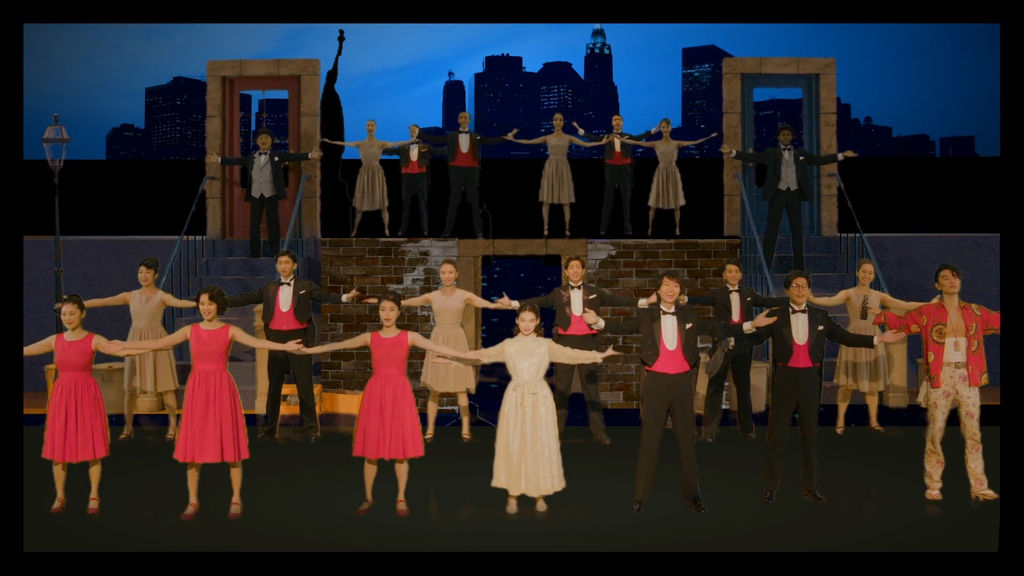How much about Japan’s war history can we actually learn from the movies? Through the transformative power of the mass-entertainment medium, much of the horrific particulars and realities of the experience are elided over for the sake of digestible narratives of heroism, reconstruction and unification.
The late surrealist and dedicated anti-war advocate Nobuhiko Obayashi was deeply connected with this theme, structuring the entire last decade of his career around probing it and ruminating on it through his trademark visual audaciousness and psychedelic autobiography. While he completed his “anti-war trilogy” with Hanagatami, a production initiated after being informed he had stage-four lung cancer, Obayashi concluded his career with the apotheosis of his anti-war sentiment and cinematic self-reflexiveness in the form of Labyrinth of Cinema.
Directed, written, edited and produced by Obayashi while receiving treatment for his cancer, the film takes the form of a dreamlike excursion through the nexus of both Japan’s war history and its cinematic history. The last pre-war theater in Onomichi, Hiroshima (Obayashi’s seaside hometown, which was virtually untouched by World War II), is set to close down, signalling an end to an era.

To commemorate this occasion, the theater is hosting a marathon of war films, bringing together the entire community to revel in the indelible mark that warfare has left on their cinema. Among them are a group of filmgoers — affable film buff Mario (Takuro Atsuki); yakuza aficionado Shigeru (Yoshihiko Hosoda); mysterious and pure Noriko (Rei Yoshida); and hopeful film historian Hosuke (Takahito Hosoyamada) — who mysteriously become trapped in the endless slipstream of war films when lightning strikes the theater and they begin a walking tour of their nation’s history of conflict rendered through the psychedelic eyes of the idealist in Obayashi.
If you are familiar with the structured madness of the director’s penultimate film, Hanagatami, then much of Labyrinth of Cinema will feel as if it was cut from the same visual cloth. While bouncing between different eras of warfare and film styles in his elliptical narrative, Obayashi lets his creativity loose and leaves seemingly no idea unexplored as he attempts to come to terms with how war has permanently influenced his beloved cinema.
Shot primarily on a green screen, which rarely if ever looks or feels naturally blended, he deliberately clutters his frame with details, borders, vignetting and subtitles, and that is only when he allows a shot to rest for more than a couple seconds before reflexively cutting to some other angle, shot or previous scene. The term for it is “zealous surrealism,” which — consistent with Obayashi’s cultivated style — bombards the viewer with resplendent visuals and ideas and makes the epic length of the experiment feel justified.

Despite the enjoyable visual playfulness of the execution, Labyrinth of Cinema contains a rather high bar of entry, as expected. If you are not somewhat familiar with Japan’s hefty history of internal and external conflict or the rich cinematic history of adapting these conflicts, then much of Obayashi’s odyssey could be baffling for reasons that have nothing to do with the visual excess of his formal design. Carrying the abstruse logic of a dream that drifts indiscriminately from the conflicts of the feudal era, leading up to bombing of Hiroshima while dropping references to the wartime work of Yasujiro Ozu, Sadao Yamanaka and even John Ford (played by the director himself), the film tends to get lost in its own composition of history.
It feels incredibly appropriate that Obayashi’s final film represents a quadrupling down of his thematic concerns as well as his unique sense of visual oddness. As you blow past scenes of feudal struggles and the battlefields of manchuria with obstructive green-screen artificiality and a color palette more audacious than sensical, you have this undeniable feeling that this is the film as Obayashi envisioned it: no compromise to be detected, it’s a clear achievement of a production to cap off a storied career of pushing the envelope.








This looks absolutely amazing! I became a fan of Obayashi’s when I first saw House (1977). I’ve been waiting for the chance to see more of his films.